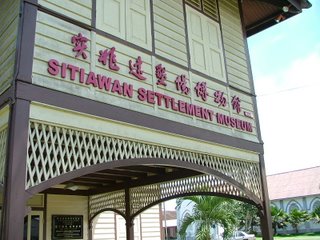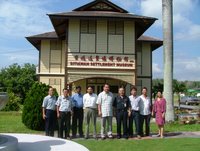
Introduction
In the year 1999,the shepherd of the church , Rev. Liew Kek Ming urged the member of the church to place emphasis in history. He hopes that Sitiawan Community will be grateful ( Think of the source while drinking water ) and to remember the spirit and contributions of the pioneer, especially in remembering the sowing of the gospel seeds in Sitiawan .Therefore, the church and Sitiawan Settlement Museum Committee mooted the idea of establishing an historical artifacts museum at the birthplace of Sitiawan, using the 70 years old parsonage. Sitiawan Settlement Museum was officially launched on 7 Sept 2003, on the eve of the centennial celebration. Its establishment was for the collection and preservation of historical facts about the Foochow pioneer. It happened in 1903,when Rev. Lin Chen Mei , Dr.H.L.Emil Leuring and Rev.Dr. Huang Pau Seng led a group of Christian clansman to Sitiawan, Malaya.
















